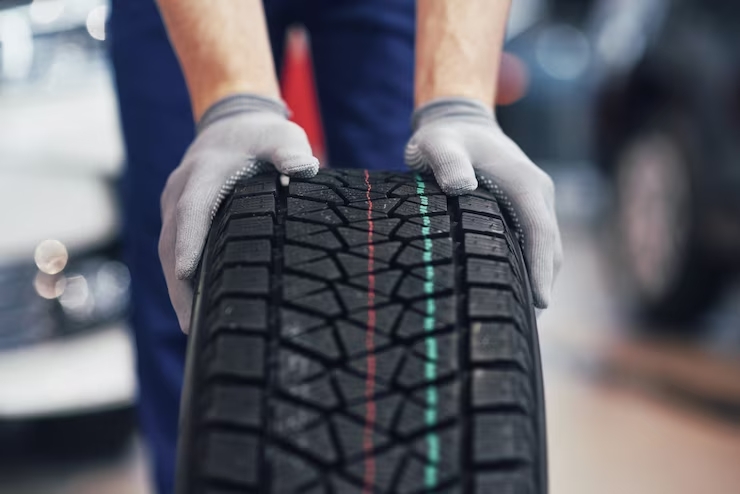Proper tire maintenance is essential for the safety, performance, and longevity of your vehicle. One important aspect of tire maintenance is tire rotation. Tire rotation involves moving the tires from one position to another on your vehicle to ensure even tread wear and maximize their lifespan. Some modern vehicles are equipped with tire rotation warning lights that illuminate on the dashboard to remind drivers when it’s time to rotate their tires. In this article, we will discuss the importance of tire rotation and provide guidance on when to schedule this crucial maintenance task.
Understanding the Importance of Tire Rotation:
- Even Tread Wear: Tires wear differently depending on their position on the vehicle. The front tires, for example, tend to wear more quickly than the rear tires due to steering and braking forces. By rotating the tires, you distribute the wear more evenly, extending their overall lifespan.
- Improved Traction: Unevenly worn tires can negatively affect your vehicle’s traction and handling, especially during adverse weather conditions. Regular tire rotation helps maintain consistent tread depth across all four tires, ensuring optimal grip on the road and improved safety.
- Enhanced Performance: Rotating your tires regularly promotes better overall performance of your vehicle. It helps maintain proper wheel alignment, reduces vibrations, and improves fuel efficiency. Additionally, it ensures a smoother and more comfortable ride.
- Warranty Compliance: Some tire manufacturers require regular tire rotation as part of their warranty conditions. Failure to comply with these requirements may void the warranty, potentially leaving you responsible for tire replacement costs.
Determining the Tire Rotation Schedule:
The optimal time to rotate your tires depends on various factors, including the type of vehicle, tire type, driving conditions, and manufacturer recommendations. However, a general guideline for tire rotation is every 5,000 to 7,500 miles (8,000 to 12,000 kilometers). Here are a few common rotation patterns and their recommended intervals:
- Front-to-Back Rotation: This involves swapping the front tires with the rear tires while keeping them on the same side of the vehicle. This pattern is commonly used for vehicles with non-directional tires and should be performed every 5,000 to 7,500 miles.
- Cross Rotation: With this pattern, the front tires are moved to the opposite sides of the rear axle, while the rear tires are moved straight forward. This pattern is often used for vehicles with directional tires and should be performed every 7,500 to 10,000 miles (12,000 to 16,000 kilometers).
- Five-Tire Rotation: If your vehicle comes equipped with a full-size spare tire that matches the size and type of your other tires, incorporating it into the rotation pattern can help maximize tire life. This pattern involves replacing the spare tire with one of the tires being rotated, ensuring all five tires wear evenly. The recommended interval is typically every 5,000 to 7,500 miles.
Responding to Tire Rotation Warning Lights:
If your vehicle is equipped with a tire rotation warning light, it’s crucial to take action when it illuminates on the dashboard. Here’s what you should do:
- Inspect Tire Wear: Before rotating the tires, visually inspect them for signs of uneven wear, such as feathering, cupping, or excessive wear on specific areas. Address any tire issues, such as misalignment or tire pressure problems, before proceeding with the rotation.
- Follow Manufacturer Recommendations: Consult your vehicle’s owner manual or contact the manufacturer to determine the recommended tire rotation pattern and interval specific to your vehicle.
- Seek Professional Assistance: While tire rotation can be done by some drivers themselves, it’s advisable to have the rotation performed by a professional technician. They have the expertise and proper tools to ensure the rotation is done correctly and safely.
- Maintain Proper Tire Inflation: After rotating the tires, ensure they are properly inflated according to the manufacturer’s specifications. Proper tire inflation contributes to tire longevity, fuel efficiency, and overall safety.
Tire rotation is a critical aspect of tire maintenance that promotes even tread wear, improves traction, enhances performance, and extends tire lifespan. By adhering to the recommended rotation schedule and responding to tire rotation warning lights promptly, you can enjoy the benefits of a well-maintained tire system and ensure your safety on the road. Remember, if you’re unsure about the tire rotation process or lack the necessary tools, it’s always best to seek assistance from a qualified technician to guarantee a proper tire rotation.











